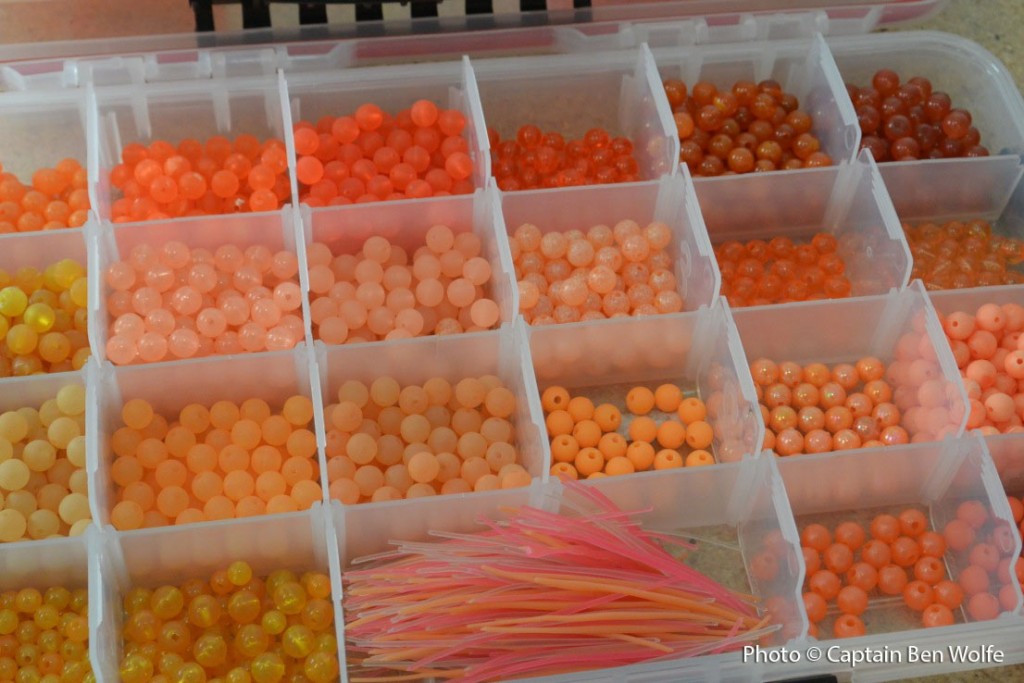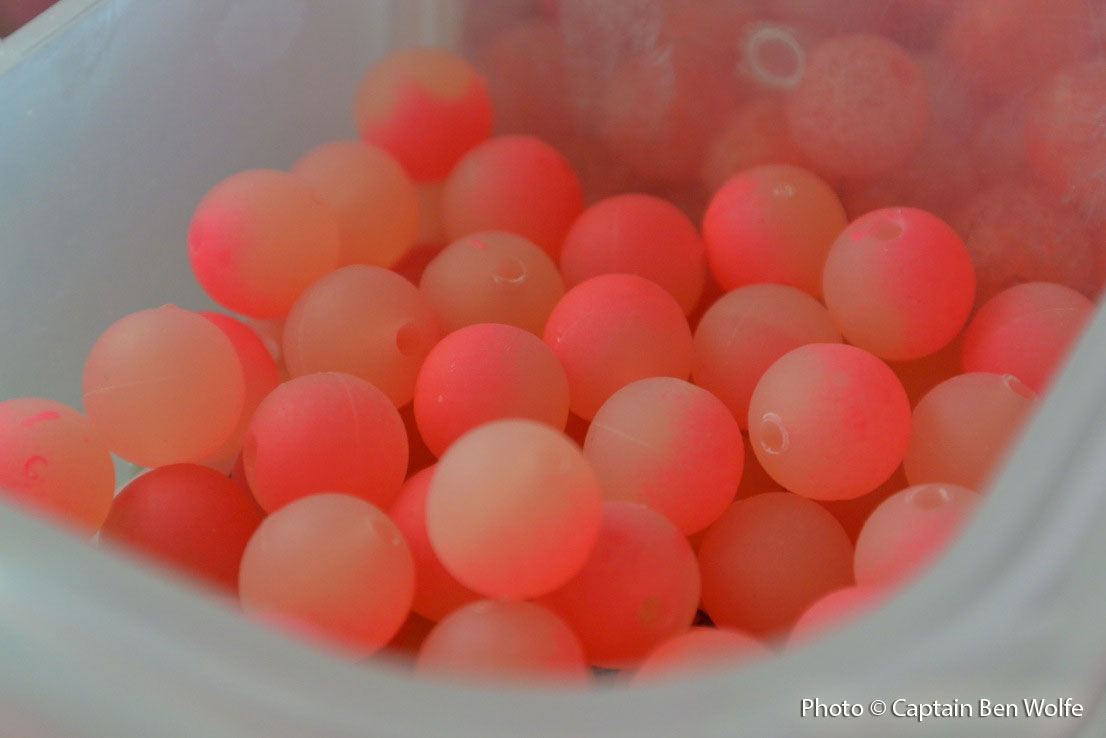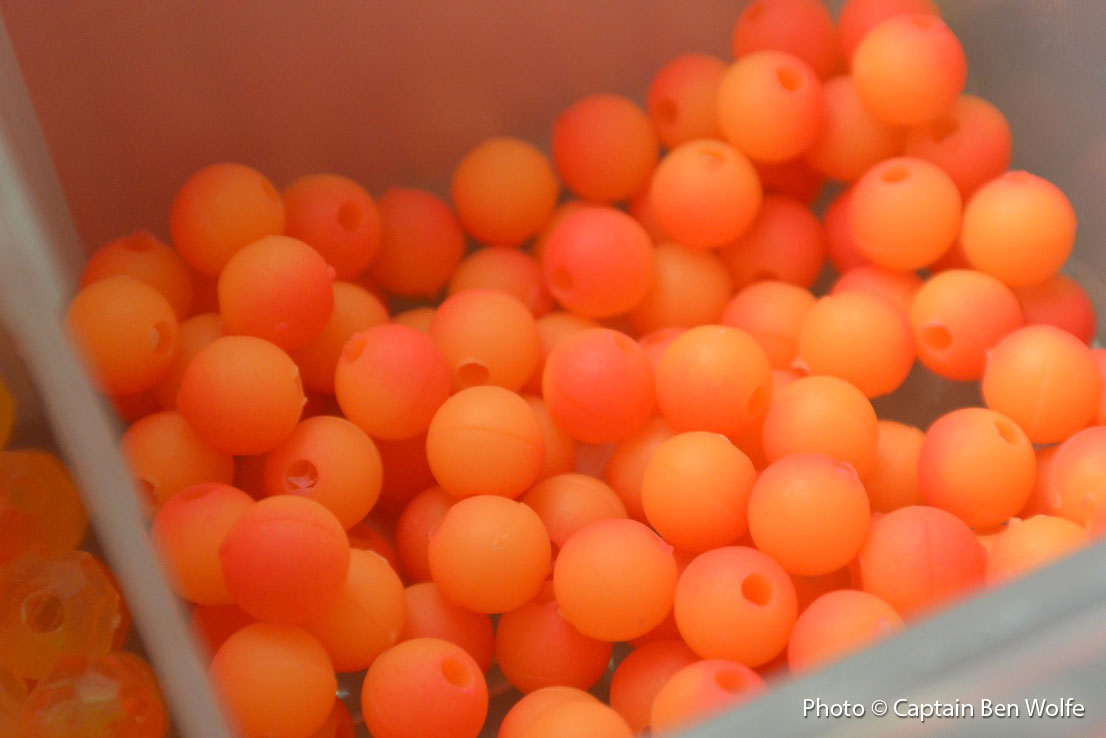The Background
Beads, the colored orbs of the fishing world meant to resemble fish eggs, should be a clear choice for anglers targeting river systems for salmon, steelhead, and trout. Beads have been around for years, but are gaining popularity every year. New bead companies are now pushing the boundaries, offering new color choices and sizes. Increasing options like this gives anglers even more options to match bead colors with river conditions, and egg colors that can vary by species and location.
Beads by themselves are simple. Made of plastic, in sizes ranging from 4mm to 12mm, with seemingly endless colors. Some beads are hard plastic, and some are soft plastic like rubber bass worms. Hard beads are slow to sink, making them perfect in river current-bouncing along the bottom and swirling, just as real natural eggs do. In contrast, the soft plastic beads float in the water. This makes them a great option to bounce along the bottom, resisting snags. The soft texture of these beads feel natural to a fish when they pick up the bead, causing them to hold on longer and giving anglers more opportunity to set the hook.
The beauty of beads is their versatility. They can be fished by fly anglers or traditional gear anglers alike. They can be bounced along the bottom in a bottom-bouncing or side drifting technique, they can be used on a chuck and duck presentation, or they can be fished under a float. Meant to resemble a single egg, beads are typically pegged onto the line a couple of inches above a hook. Presented in this manner, beads can be fished by themselves or, more commonly, on a double tandem rig with two beads, or a bead and fly combo.
The Controversy
Despite the proven effective fish-catching power of beads, there are those that don’t care for them. Some believe that fishing beads is not as effective as fishing bait-meaning cured or raw salmon eggs. Others believe that fishing beads is unethical, as the bead is traditionally pegged above the hook. Legally speaking, there are no restrictions on fishing beads-they are perfectly legal to fish, even when pegged onto the line above the hook. The main argument against the use of pegged beads above a hook seems to be that the bead is not attached to the hook, making it a snagging technique. Again, there is no legal restriction against this rigging presentation, and I would argue that there are other commonly used techniques that are just as, if not more, prone to snagging fish as the use of a pegged bead. Most of the bead fishing done by Sport Fish Michigan and Wolfe Outfitters guides uses beads fished under a float. I believe that it is difficult to snag a fish when fished under a float.
They Flat Out Work
In fishing, there is a time and a place for every presentation. Bait has a time and a place, and so do beads. There have been countless times that beads have out-fished bait. And the simplicity of beads means anglers don’t have to mess with getting and curing salmon eggs and tying them into spawn sacks. When fish are keying-in on single eggs, beads are incredibly tough to beat. Additionally, strikes can be enticed by applying different scents to beads. Alternately, when salmon or steelhead are keying in on larger presentations, spawn sacks or chunks of skein can be more effective.
Beads offer versatility in rigging. Color and sizes give anglers a presentation that can appeal to a variety of species all at the same time. Salmon, steelhead, rainbow trout, brown trout, lake trout, and brook trout all eat beads incredibly well. In addition, we have caught walleyes, bass, bluegills, and even hooked up with sturgeon on bead presentations.
In Conclusion
Despite the limited controversy over bead fishing, their use continues to grow in popularity and effectiveness. I, for one, will continue to use beads, as they have proven themselves over and over on guide trips here in northern Michigan. Chasing trout, steelhead, and salmon, beads have a place in my guide box. There are many great bead companies, and the three that I use most are Trout Beads, Great Lakes Bead Company, and Steelhead Beads from the west coast. All offer something different, and all beads are not created equal. A bead isn’t just a bead, and it pays to experiment with color combinations and color differences. The way light illuminates a bead color can vary drastically from river to river, and fish may prefer one color or size to another in different systems. If beads aren’t in your bag of tricks, give them a try. You may be surprised by their simple effectiveness, and I’m sure you’ll agree with me and my Sport Fish Michigan and Wolfe Outfitter guides that beads may very well become a favorite go-to when chasing salmon, steelhead, and trout.







